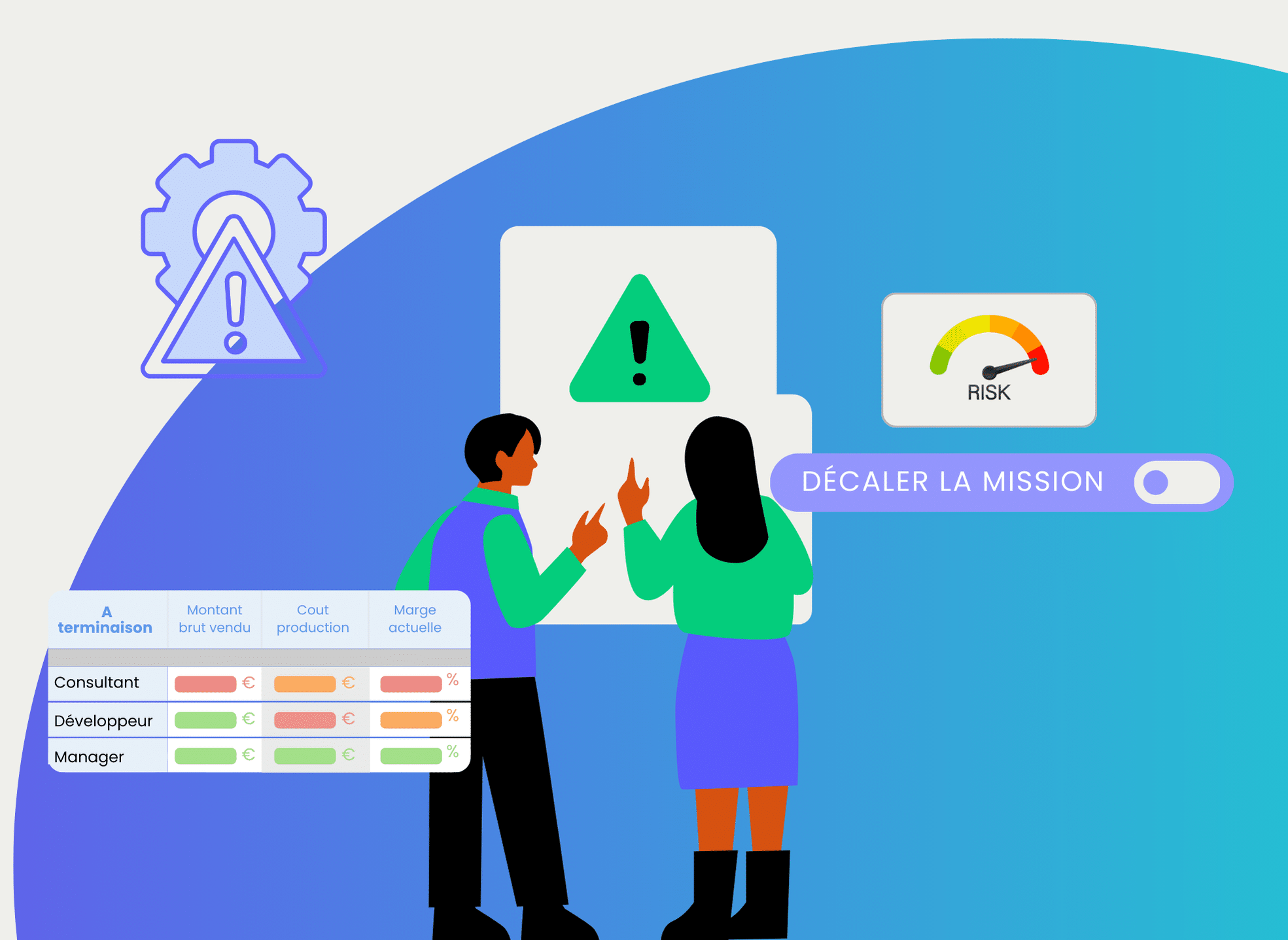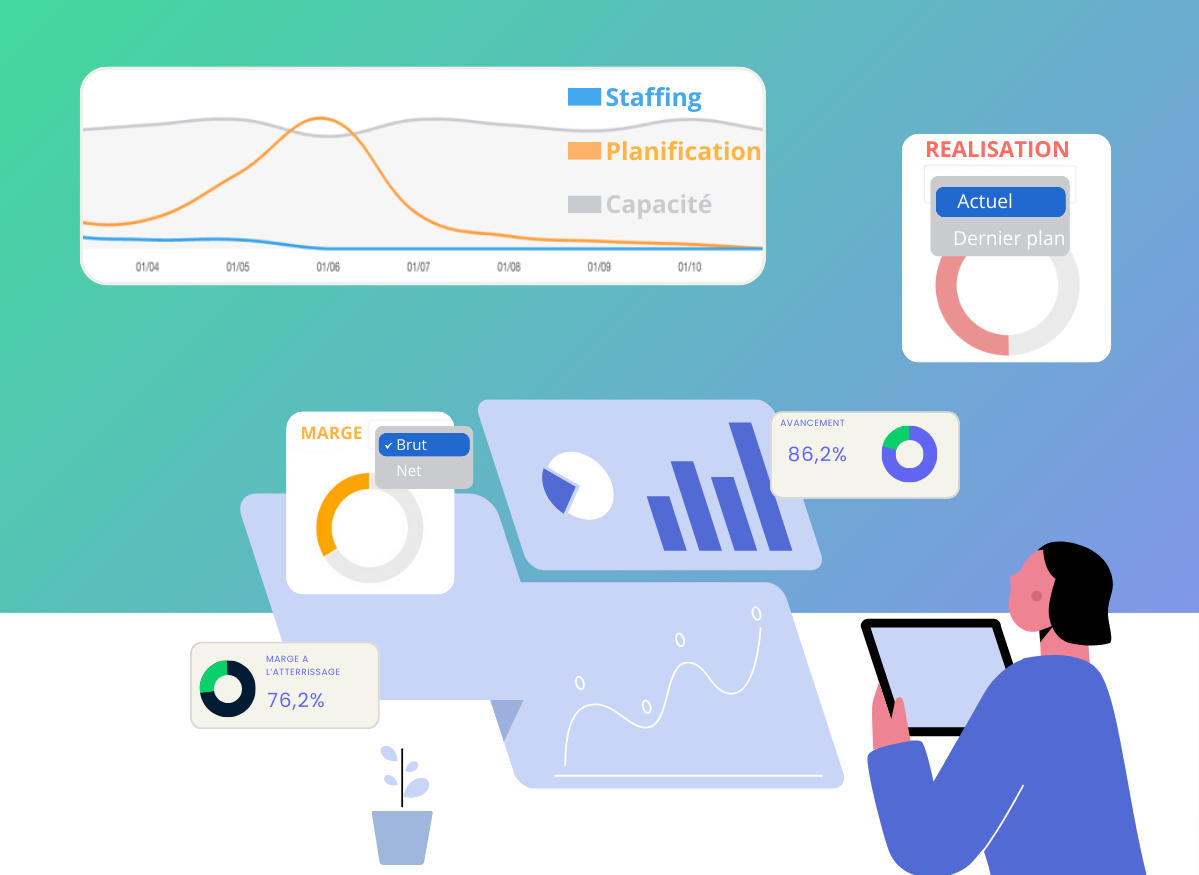How To Improve Project Deliverables Management?

If you're selling projects, your deliverables are probably your top priority. They determine your customers' satisfaction, and contribute to your growth.
However, to produce quality project deliverables, it is necessary to respect the fundamentals of project management. Because if the deliverable represents the final product, its proper execution requires certain steps to be followed.
What is a Project Deliverable?
The project deliverable is any product, document or production, regardless of its format, that meets the client's needs.
The deliverable usually refers to the final delivery of the project. But it can also be an intermediate deliverable, shared during the project to clarify expectations and validate the direction followed.
How To Define the Deliverables of a Project?
Several formats can be suitable for delivering a project. However, the type of deliverable selected will be chosen based on the objectives of the project.
In general, the definition of a deliverable must be precise, measurable, and within a time limit.
As far as the choice of deliverables is concerned, it is generally the result of a consultation between several stakeholders:
- the customer,
- the project manager,
- the sponsor.
What is the Difference Between a Task, a Milestone and a Deliverable?
The notions of tasks, milestones and deliverables are sometimes mistakenly confused.
- A project task is an activity or set of activities that contribute to the execution of the project.
- A milestone is a time benchmark. It can be a closing or review stage of a deliverable, or a task or project phase deadline.
- The deliverable is ultimately the concrete result of a project.
What Are the Different Types of Project Deliverables?
The notion of project deliverable can be abstracted without concrete examples. In addition, a type of deliverable may be more or less suitable for a project.
Let's take a closer look.
External Deliverables for the Customer
Whether intermediate or final, external deliverables are intended for the customer.
The purpose of the deliverable can vary from a simple presentation – for example, to validate a proposal or make a status report – to the finished product.
Internal Deliverables for the Project Teams
Some deliverables only circulate internally, within the project teams. This can be the case for summary documents, short-term planning, or models.
These are deliverables necessary for the supervision or progress of the project, which it would not be relevant to share with customers each time. They are used in particular to validate certain choices and steps.
The Challenges of Project Deliverables
The deliverables of a project have many challenges throughout the life cycle of the project. To deliver a product that meets the customer's requirements, their expectations must be explicitly clarified and understood by all stakeholders.
From a global point of view, the deliverable is the end of the project, what the client will invest in your services for. It is therefore used to contractualise the value of a project, but also to justify its invoicing. Thus, in fixed-price projects in particular, the finalization of a deliverable can trigger the invoicing process.
Finally, as a production objective, they make it possible to structure the management of the project around the delivery stages.
Challenges Faced By the Project Manager
The project manager is responsible for the quality of the deliverables.
In particular, he must ensure the proper formalization of needs, but also the understanding of the deliverable expected by his team.
- Align customer needs and their understanding by teams
A task that is not easy, since it depends on a good understanding, and consequently, on clear communication.
The challenge for the project manager is therefore to ensure that internal and external perceptions of what a good deliverable is aligned. It starts with getting clear instructions from the client to avoid scope creep.
The project manager is also responsible for reviewing and validating or revising the deliverables according to a list of objective deliverable acceptance criteria such as:
- quality,
- the structure,
- completeness.
Documents such as the specifications or a project framework note make it easier to understand.
- Coordinate internal and external contributors to produce on time
Balancing the balance between the quality of deliverables and tight deadlines is another major challenge.
The project manager may be required to coordinate several trades for the production of the same deliverable. A challenge that is added to the arrangement of internal and external employees, in the context of a call for subcontractors.
- Facilitate validation processes
The project manager must provide a smooth and unambiguous validation circuit with the client. This facilitates exchanges and promotes productivity. In this sense, a follow-up of deliverables is set up to keep traceability on each version delivered.
Challenges Faced by the Manager
On the manager's side, the stakes are at the level of management control.
- Ensure contractual compliance of deliverables
The manager intervenes at several levels on the control of deliverables. He must first ensure that the project schedule is respected, and intervene proactively to avoid delays.
The content itself is also examined by the manager. This reduces the risk that deliverables will be produced outside the contractual scope, which would constitute a breach of previously determined obligations. Such a situation would lead to negotiations or a reorganization of the schedule, eating away at the profitability of the project initially planned.
- Guarantee the quality of deliverables
The manager ensures that the deliverables support the perceived value of the project.
He must ensure that he has the necessary visibility on the actual progress of the deliverables. This requires structured project management.
- Use deliverables as levers for customer satisfaction and loyalty
A non-compliant or low-quality deliverable will damage the reputation of the team, or even the company.
Regular control of deliverables makes it possible to anticipate the risks of rejection by the customer, and in the worst case, litigation.
What Are the Challenges for Consultants?
The consultants receive the instructions and execute the project. They actively participate in the writing, design and implementation of the expected deliverables .
- Understand precisely what to deliver
Consultants are at the heart of the action. To deliver a product that lives up to expectations, they need to be clear with the instructions. However, a lack of clear information on quality criteria, both in terms of content and form, can mislead the production circuit.
- Respect formats and deadlines
Compliance with deadlines is added to the quality requirement in the list of production criteria to be met. However, as the time provided for in the schedule is imposed on them, they may be underestimated, or not take into account the employee's total occupation rate.
Consultants are then under pressure to produce on time, sometimes without room for manoeuvre. This issue of good project execution therefore depends directly on effective and rigorous management.
- Adopt the validation circuit
It is the consultants' responsibility to ensure that their work has been validated before being delivered to the client.
However, the multiple trips back and forth with a project manager – who is also mobilized on other responsibilities – can be demotivating, especially when the exchanges are dragging on. A doubt can then arise, and the entire production chain is impacted.
The Importance of Deliverables in PMO
The project management office has a responsibility on a macro scale. He ensures that the current activity is aligned with the company's strategic objectives. As a result, he seeks to capitalize on successes, and also intervenes in the event of a blockage.
The PMO can propose a standardization of deliverable formats in order to gain speed. They must then ensure that these pre-made models are adopted by the teams by collaborating with the project managers to communicate their importance.
He also monitors production by studying the quality of deliverables through checklists or validation workflows. It is then necessary to ensure that in real conditions, time is available and reserved for quality control prior to delivery.
Once the production is delivered, the PMO is responsible for archiving it. He also takes the time to analyze the deliverables, always with a view to optimizing existing processes.
Examples of Project Deliverables
Because an example is always more meaningful, we offer you a list of examples of project deliverables, depending on the industry.
Consulting Deliverables
There are two main categories of deliverables in a consulting project : reports and presentations.
Among the reports are:
- diagnostic reports,
- the business case,
- key performance indicators,
- the governance review,
- the sustainability plan.
For presentations, there is a choice between:
- process mapping,
- the strategic roadmap,
- process maps and action plans,
- the change management plan,
- the framing note,
- business recommendations,
- the impact study,
- the user guide.
IT Project Deliverables Examples
IT deliverables are rather distinguished by their recipient.
Thus, we find as an example for external deliverables:
- a mobile application,
- a web application,
- software,
- a website,
- a back-office platform.
In addition, there is any type of complementary deliverable such as:
- the source code,
- the test book,
- technical specifications,
- models and prototypes,
- technical documentation,
- the specifications,
- the acceptance reports,
- the user guide and the user guide.
As for the deliverables that circulate only internally, we find:
- the project charter,
- the project management plan,
- the project report,
- the deployment plan.
What Are the Project Deliverables for PMO?
In PMO, deliverables are not business artifacts per se, but rather all the tools, reports and methodological frameworks that make it possible to improve the management of the entire project portfolio.
There are then 5 families of PMO deliverables.
- The framework and methodological standards:
- the PMO Charter,
- the PMO deployment plan,
- the reference framework of good practices.
- Reporting and dashboards:
- the portfolio dashboard,
- periodic progress reports,
- tracking KPIs and scorecards.
- Risk management:
- the risk register,
- the action plan and the follow-up of the issues.
- Resource management:
- capacity planning,
- the load arbitration report (charve vs capacity, over or under load, recommendations).
- Quality control:
- the delivery checklist,
- the assessment of the gaps between the project practice and the methodological framework,
- the feedback sheet,
- the plan to increase maturity.
What Tools Should Be Used to Track Project Deliverables?
The production and monitoring of project deliverables is difficult to centralize because of the large number of stakeholders involved. That's why only the Stafiz platform can help you standardize your deliverable management!
Designed by and for professionals in project work, our tool offers its functionalities born from a business need.
Integrated Mission Monitoring
Stafiz's mission tracker shows you the progress of projects. It is then possible for you to situate the production carried out in relation to the deadlines, and to act accordingly.
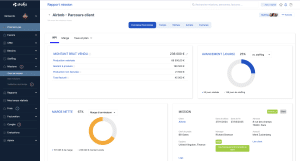
Track the progress of a project and its deliverables in Stafiz
You can also edit your quotes – in the event of re-negotiations for example – in PDF or Word format. These changes are practical in planning and managing contractual commitments related to deliverables.
You can also create custom contract templatesand save them for future projects.
A Tool to Empower
Stafiz allows you to assign assignment managers for each project, making it easy to coordinate and track deliverables. The more your employees are supported by the right tools, the more they adopt a posture of ownership over their tasks. You then benefit from optimal productivity thanks to fluid management processes, because they are understood by all.
One way to display the names of managers on a project page is to display this feature. This is valuable information to reduce silos in large-scale projects.
If you want to configure validation processes (for time, expenses or deliverables), the mission manager will be taken into account and alerted.
A Flexible Resource Planning Tool
Stafiz allows you to manage the resource planning Mission-based management, crucial to ensure that the right resources are allocated to the right tasks, in order to produce the required deliverables.
Smart Alerts to Maximize Focus
Alerts can be triggered by specific actions or situation-based, as in the following two scenarios.
- Risk monitoring: you are alerted when certain mission indicators exceed the set limits. This ensures that you don't miss out on an urgent situation, in case you don't have enough time to follow your dashboards.
- Completed deliverables: You can be alerted when a task related to the design of a deliverable is closed. This is particularly useful for speeding up the validation process.
These alerts can appear directly on the Stafiz homepage or be sent to you by email.
Automated Invoicing
Stafiz also allows invoicing to be managed in an automated way. Once you've set up alerts and triggers, you can:
- automatically create and send invoices from Stafiz,
- Use custom email templates for sending invoices.
- Track invoice shipments and payments.
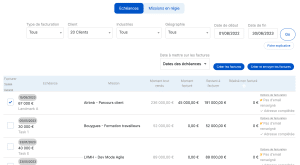
As part of the management of your deliverables, these invoices can be triggered as soon as a deliverable is ready and validated.
Project Deliverables: Best Practices
You know the issues associated with project deliverables, but you are not immune to management error. To support you, we offer you a checklist of best practices to adopt for a serene management of your deliverables!
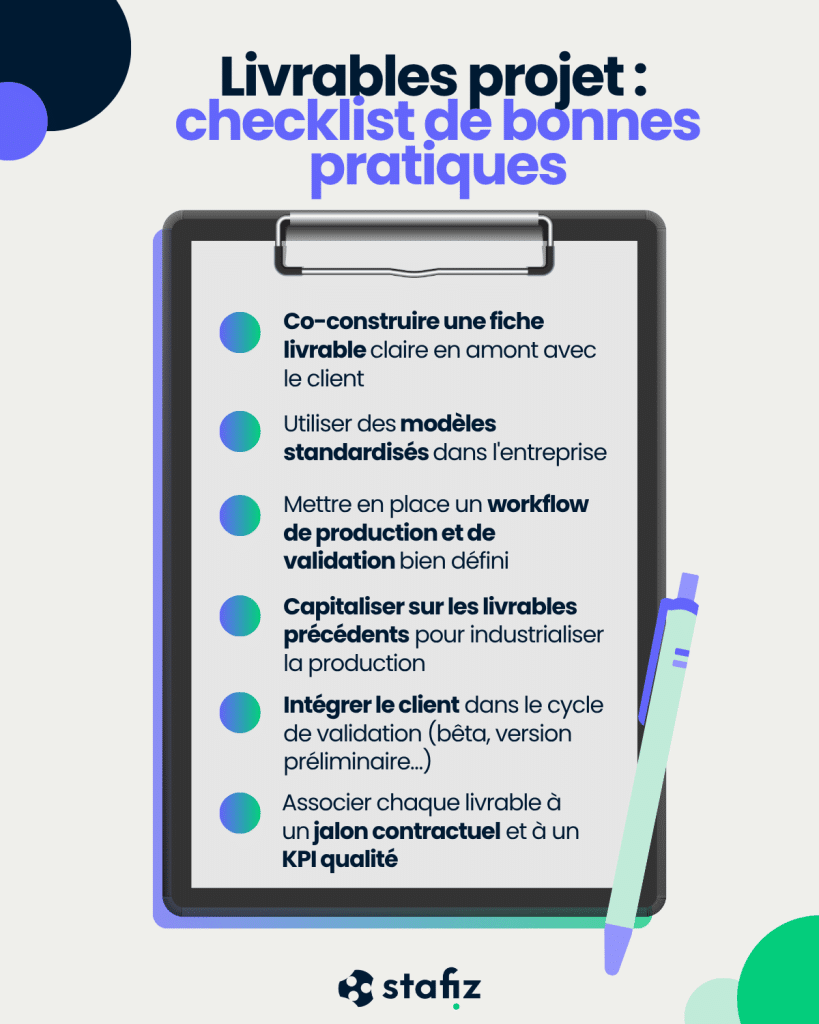
The quality of your deliverables reflects your expertise and rigor. They are a major issue for your business. To ensure compliance, perceived value, and customer satisfaction, their management must be structured, collaborative, and rigorous.
Questions:
It is necessary to document your deliverables to make it easier to follow-up. To do this, specify in a document:
- its context,
- its manager,
- its acceptance criteria,
- its expected format,
- its delivery date.
The aim is to guarantee traceability, mutual commitment and avoid misunderstandings.
To present your deliverables, you can opt for a schedule or roadmap, a graphic diagram, or a slide presentation.
To map the available skills, you can use tools such as notion, Excel or Google sheets for a table format, or Miro for more visual representations.
However, to benefit from smooth project management, we recommend the Stafiz solution to centralize your activity.
